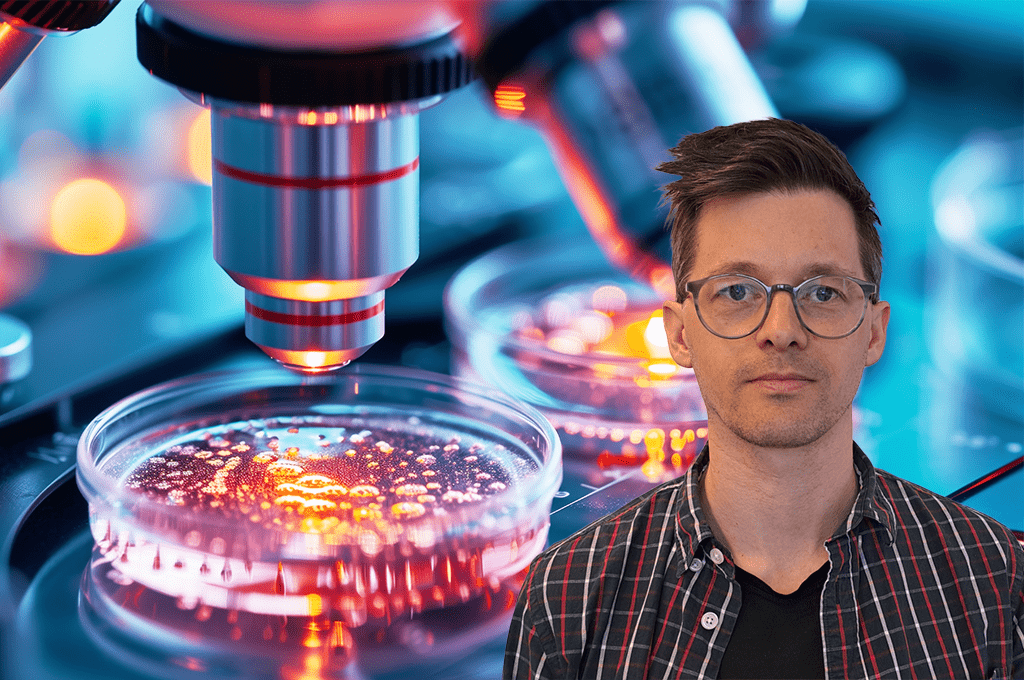New tool simplifies deconvolution for fluorescence microscopy
SciLifeLab researchers from Karolinska Institutet, Stockholm University, and the Royal Institute of Technology (KTH) have developed a new open-source software for deconvolution of fluorescence microscopy images named Deconwolf. They benchmarked it against commonly used deconvolution tools, demonstrating that Deconwolf outperforms them on various analyzed images. Deconwolf is freely available and can be easily adopted by anyone with basic skills in image analysis. The study is published in Nature Methods.
Widefield fluorescence microscopy is broadly used across life sciences and diagnostics, as widefield microscopes are more affordable and easier to operate than confocal ones. A limitation of widefield microscopy is that the images obtained with this technique appear less sharp than confocal images. Because of out-of-focus light. Optical deconvolution is a mathematical technique that can counteract this problem and increase the sharpness and contrast of widefield fluorescence microscopy images.
When a beam of light traverses the lenses of a widefield microscope it produces a characteristic ‘butterfly’ shape in 3D, which is mathematically described by the so-called point-spread-function (PSF). Since this PSF combines data from multiple image planes, the resulting images have a “blurry appearance”. Deconvolution reverses this spread of information, by calculating where and how strong the light sources are in the sample. Each microscope has its own characteristic PSF, which could be measured experimentally. However, this is often practically unfeasible, so a theoretical PSF is used instead. Several computational tools exist to calculate a theoretical PSF, with PSF Generator representing the most popular one.
Numerous commercial and open-source deconvolution software have been developed. However, their widespread adoption has been limited by high fees (for commercial software), programming skills requirements, and the need to tune multiple settings. Which is not trivial for non-experts in image analysis. Furthermore, a systematic comparison of the performance of multiple deconvolution tools on real-world images had not been described before. This includes images obtained by methods that generate diffraction-limited fluorescence signals such as single-molecule fluorescence in situ hybridization (smFISH) techniques.
Unparalleled deconvolution speed and quality with Deconwolf
To develop Deconwolf, Erik Wernersson, a senior scientist in the Bienko-Crosetto Lab at SciLifeLab and first author of the study. Leveraged the Richardson-Lucy (RL) method which is at the core of state-of-the-art deconvolution tools. And created a highly efficient implementation with the so-called Scaled Heavy Ball (SHB) acceleration method to reduce the number of required RL iterations. Additionally, he showed that the typical way to calculate a PSF with the Born and Wolf model leads to insufficient precision and proposed a solution to circumvent those problems. Wernersson also implemented a procedure to minimize lateral and axial boundary artifacts, which is not part of any other deconvolution software.
“This is a clear example where a clever combination and improvement of pre-existing tools, sometimes developed in a completely different field—such as the boundary handling approach implemented in Deconwolf, which was originally developed in astrophysics—leads to a much better method that outcompetes all previous tools and can be truly transformative as our software is,” says Wernersson.
The authors thoroughly benchmarked Deconwolf against the two most popular deconvolution tools available: Huygens (a proprietary software) and DeconvolutionLab2 (open source). Using a variety of images, including synthetic images, immunofluorescence images, and images obtained by smFISH and high-resolution DNA FISH. Deconwolf clearly outperformed Huygens and DeconvolutionLab2 in terms of speed and quality of the deconvolved images.
Notably, the application of Deconwolf enabled resolving densely packed transcripts from highly expressed genes in smFISH images. Which was not possible before. Furthermore, thanks to its superior speed compared to all other deconvolution tools tested. Deconwolf was able to resolve individual transcripts in smFISH images acquired at low magnification (25X) across an entire tumor tissue section, a result that was never achieved before and paves the way for the translation of smFISH to diagnostics.
Lastly, the authors tested whether their new software could improve the detection sensitivity in imaging-based spatial omics methods, which produce punctuated fluorescence signals that resemble those generated by smFISH and similar techniques. Specifically, the authors tested Deconwolf on two sets of images previously generated by OligoFISSEQ and in situ spatial transcriptomics (ISST). In the latter, Deconwolf increased the number of transcripts identified more than three times, whereas its application to OligoFISSEQ images drastically improved the fraction of complete single-cell chromosome traces that could be reconstructed using this technique.
“We really think that Deconwolf can be a transformative tool, making deconvolution much more at the reach of everyone using fluorescence microscopy. Widefield microscopes cost a fraction of confocal ones and we have shown that by simply combining widefield imaging with Deconwolf can yield images of comparable if not superior quality to confocal images. Thus, I expect that our tool, which is completely free, will enable many labs, including those in low-income countries, to maximally leverage the power of widefield microscopy” says Magda Bienko, senior author on the paper who coordinated the effort.
The research was supported by grants from the European Research Council, the Swedish Research Council, the Swedish Foundation for Strategic Research, the Swedish Cancer Research Foundation (Cancerfonden), the Human Frontier Science Program (HFSP), the Strategic Research Programme in Cancer (StratCan, now Cancer Research KI) at Karolinska Institutet, the Ragnar Söderberg Foundation, the Knut and Alice Wallenberg Foundation, and the Erling Persson Foundation





